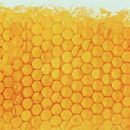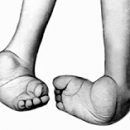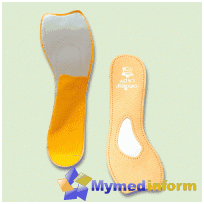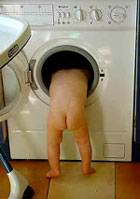Pedge's disease is seriously transported by patients. In addition, this ailment is dangerous with multiple complications. You will learn more about this from this article.
Content
Although there are evidence that these diseases are suffering from prehistoric times, it was unknown until the XIX., When James Podgeet first described him and called the deforming osteite, believing that the disease is a chronic inflammation of bone tissue.
In the disease of the PEDGET, a reinforced pathological restructuring of bone tissue occurs, which is characterized by an alternating change of resorption processes with osteoclasts of fabric and its neoplasms. This process leads to the formation of a disorganized mosaic structure of bone tissue with sections of a fine structure. As a rule, observed fibrosis of the bone marrow.
Many researchers suggest that PEDGET's disease develops as a result of a viral infection, but this theory should still be proved. Previously, there were attempts to establish the relationship between the presence in the house of the dog and the Pedge's disease, although the antigen of a virus causing a chumka in dogs was found only at half of the patients. In the future, this hypothesis was rejected.
Pedget's disease suffers mostly white population of north-European origin. This disease is practically not found in the Far East, in India, Africa and the Middle East. In the US, it is more common in the north of the country than in the south. Men get sick more often than women (3: 2).
Starting from 50 years of age, the incidence is doubled every 10 years, reaching almost 90% to the 90th age. The prevalence of the disease is 5% in England and 1-3% in the US.
Pedge's disease in relatives of the patient meets 7 times more often than in the control group. The risk of developing the disease is even more increasing if the relative has manifested the disease at an early age or it takes hard.
The most frequent manifestation of the disease of the PEDGET is pain (80% of cases). The second in frequency of the symptom of the disease - pain in the joints, usually in the knee, hip or spine. Characterized by hyperthermia of soft tissues over affected bones. In emerging cases, deformations of bones are developing, including thickening of the bones of the skull and the arcuate curvature of the bones of the leg. There is a tendency to pathological (spontaneous) fractures, most often the fractures of the femoral, more-bertova, shoulder bones and forearm occur.
Changes in the disease of the PEDGET can develop in one or more skeleton bones (the so-called monoexic and polyosal form), respectively, 20% and 80% of cases, while the defeat can affect any bone. The most frequent localization of the process during mono-general form - tibial and iliac bones. In general, most often amazed (in descending order) pelvic bones, the lumbar spine, the femur, the chest spine, the crushes, the skull bones, the tibial and shoulder bones.
The group of bone complications of the disease of the PEDGET include:
- bone pain;
- deformations of bones and joints (arcuate curvature, hanging forehead);
- Fractures.
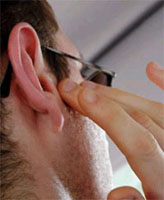 Neurological complications of PEDGET's disease include:
Neurological complications of PEDGET's disease include:
- hearing loss (due to the compression of the auditory nerve);
- compression of nerves (cranial nerves, spinal nerves roots);
- spinal cord;
- violation of the anatomy-topographic relations between the bones of the skull and the brain (for example, Basilar Impression - the upper spine Division knocked up the skate of the skull);
- headaches;
- strokes (as a result of the compression of blood vessels).
The group of vascular complications include:
- phenomenon «Touching» (the outer carotid artery feeds the blood of the tight fabric, as a result of which the brain does not receive blood in the right amount; clinically the patient develops drowsiness and apathy);
- Hypertermia.
From the side of the heart there may be such complications:
- an increase in cardiac output;
- stagnant heart failure;
- arterial hypertension;
- increasing heart size;
- angina.
The complications of the disease of the Pedge can also be the development of such tumors:
- Osteogenic sarcoma (0.2-1.0%);
- Fibrosarka;
- Benign giant tumors.
Pedge's disease can cause a metabolic disorder, causing hypercalcium, nephrollociety.

